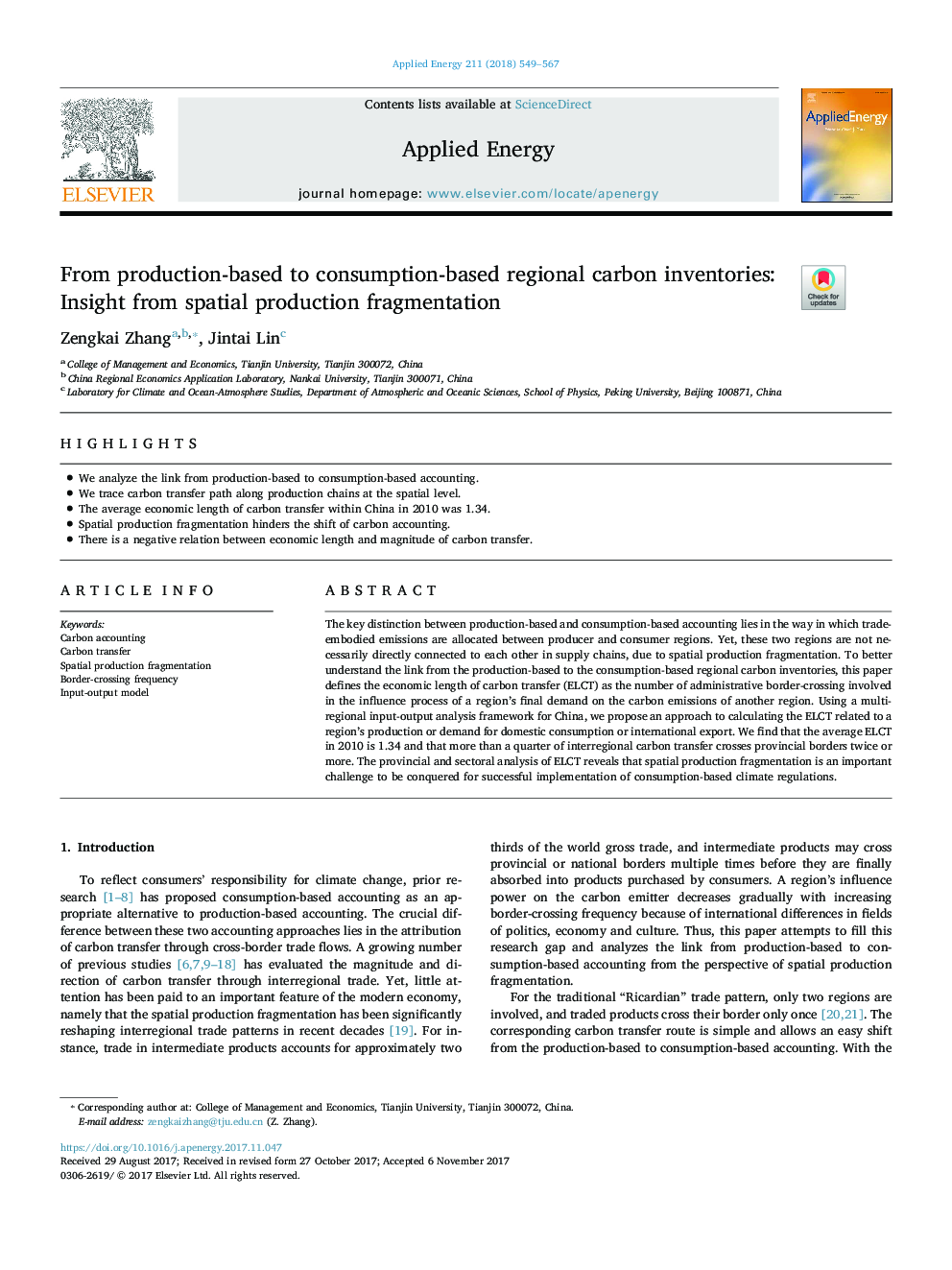| Article ID | Journal | Published Year | Pages | File Type |
|---|---|---|---|---|
| 6681279 | Applied Energy | 2018 | 19 Pages |
Abstract
The key distinction between production-based and consumption-based accounting lies in the way in which trade-embodied emissions are allocated between producer and consumer regions. Yet, these two regions are not necessarily directly connected to each other in supply chains, due to spatial production fragmentation. To better understand the link from the production-based to the consumption-based regional carbon inventories, this paper defines the economic length of carbon transfer (ELCT) as the number of administrative border-crossing involved in the influence process of a region's final demand on the carbon emissions of another region. Using a multi-regional input-output analysis framework for China, we propose an approach to calculating the ELCT related to a region's production or demand for domestic consumption or international export. We find that the average ELCT in 2010 is 1.34 and that more than a quarter of interregional carbon transfer crosses provincial borders twice or more. The provincial and sectoral analysis of ELCT reveals that spatial production fragmentation is an important challenge to be conquered for successful implementation of consumption-based climate regulations.
Related Topics
Physical Sciences and Engineering
Energy
Energy Engineering and Power Technology
Authors
Zengkai Zhang, Jintai Lin,
